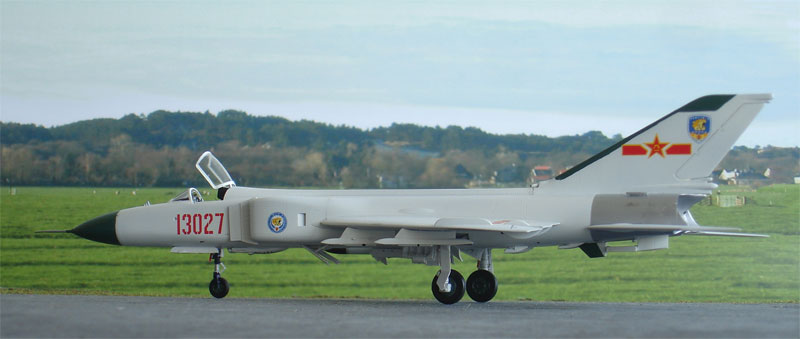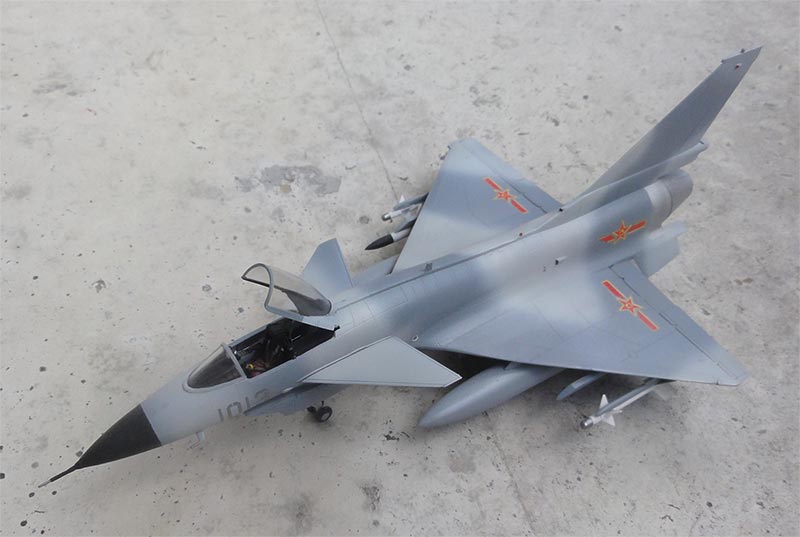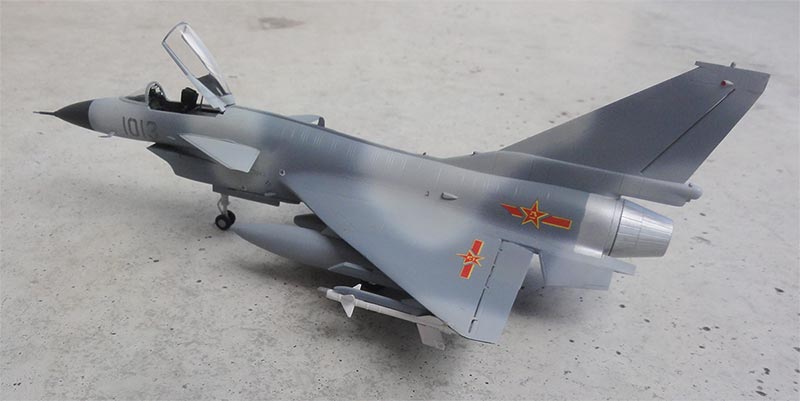[ page 1 ]
Chinese aircraft models in 1/72 scale
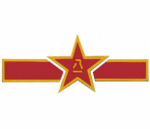
Chinese aircraft are becoming more and more subjects of plastic model kits. This is also a large contribution of the Chinese kit brand TRUMPETER, who issued a lot of kits during recent years including those of chinese aircraft types. The Trumpeter kits are getting better and better.
Many models are of the China aircraft industry. Called after the city in the North of China where traditionally aircraft were being built, the various manufacturing plants like the Shenyang Aircraft Corporation (China), Chengdu and Harbin started with copies of Soviet types like the Mikoyan MiG-15, (J-2), MiG-17 (J-5), MiG-19 (J-6), MiG-21 F13 (J-7) and Tupolev Tu-16 (Harbin H-5) during the Cold War and later also starting developing their own aircraft types with the Nachang Q-5 and Shenyang F-8.
The Chinese air force, PLAAF is a large airforce with thousands of aircraft with off course fighters, bombers and transports as well as helicopters. Also a very large naval air arm (PLAN) is operated which not only has naval aircraft like the usual helicopters but also its own fighters, transports and the first aircraft carrier operated air wings. The Chinese army air corps (AAC) operates large fleets of helicopters.
0. Shenyang J-7 (on MiG-21 page...)
2. Chengdu J-10
3. Xian JH-7
![]()
page 2
JH-7
page 3 J-15
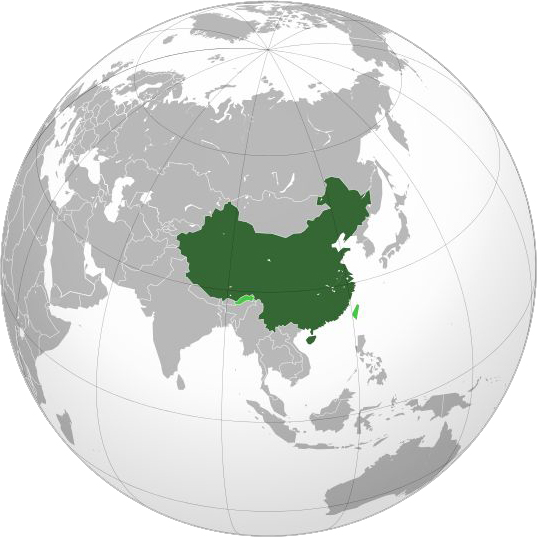


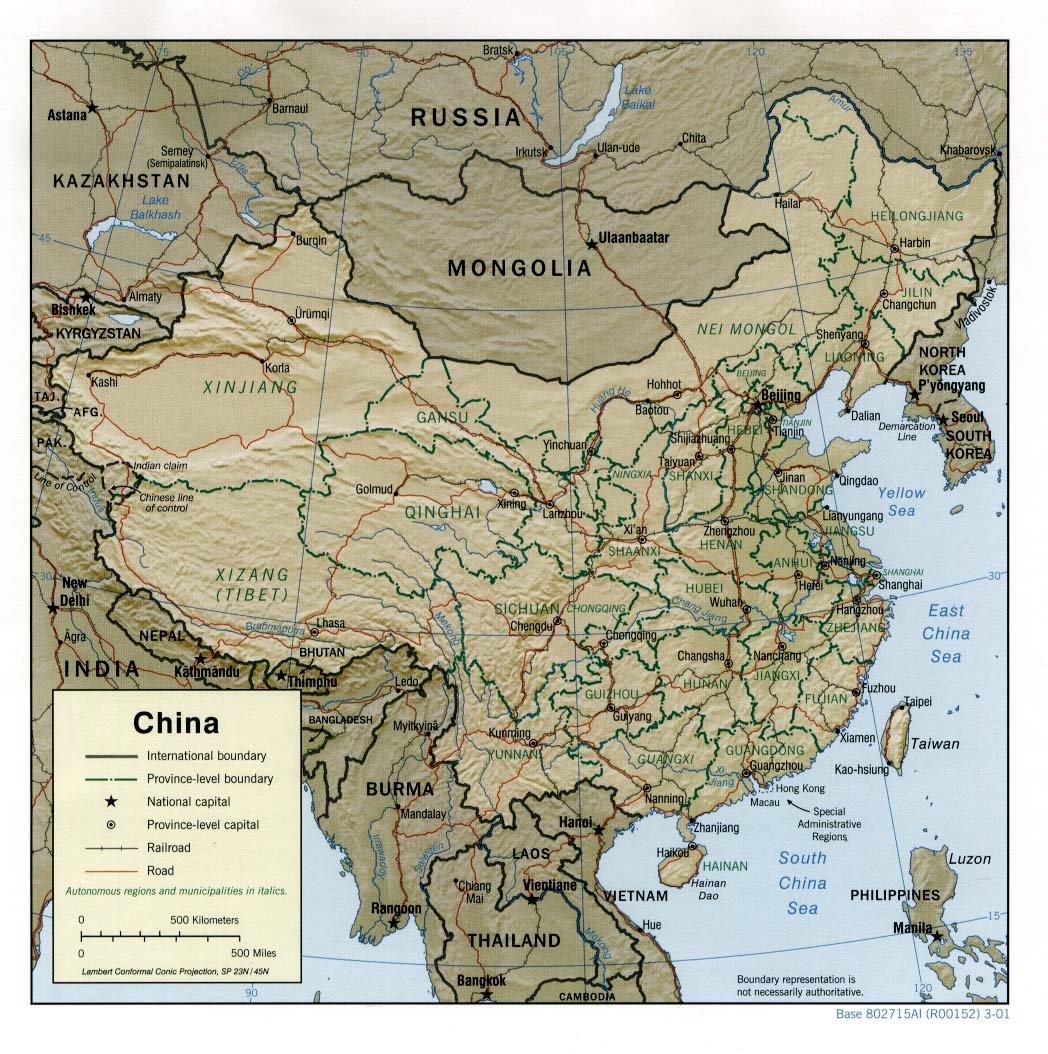
[ 9,5 million sq.km | pop. 1,400,000,000 | capital: Beijing | GDP $10,000 per capita nominal estimated ]
China, with a population of no less than 1.4 billion under the control of the Communist Party, has developed into a powerful country. Around 1900, local warlords were active in a divided China. In September 1924, the Kuomintang Nationalists and the Communist Party formed a pact to unite China. Apparantly China had bought many aircraft in Europe after the end of the First World War but these were in fact never flown. Military aviation then started with a flight school in Guangzhou that flew American planes such as the “Rosamonde”. Some 50 Curtiss Hawk pursuit biplanes were also acquired in 1933 and Fleet, Stearman, Vought Corsair and Waco trainers. Attempts were also made to set up aircraft factories, but they failed because of the aggressive Japanese invasion of Manchuria in the 1930s. The Chinese were in fact unable to defend for example Shanghai.
During World War II, China was largely occupied by Japan. After the attack on Pearl Harbor, volunteers from the United States of America started flying against the Japanese in the Chinese region. Known as the Flying Tigers, they had 3 squadrons equipped with Curtiss Hawks and achieved considerable success.
After the war, a struggle for power between the Chinese communists led by Mao Zedong and the nationalist Kuomintang started. Fighting had broken out and General Chiang Kai-Shek's Kuomintang had to withdraw to the island of Taiwan. They founded their own state there, known as the “Republic of China” (ROC). In July 1949, a Chinese flying unit had six P-51s, two Mosquitos and two PT-19s. With this, the People's Liberation Army Air Force (PLAAF) was officially established.
In June 1950, the Korea war broke out. Soviet leader Stalin offered Mao help and provided Mikoyan-Gurevich MiG-15 jets with Soviet instructors. The Chinese pilots proved to be formidable opponents of the Americans with F-86 Sabres over Korea. The PLAAF soon had about 3,000 aircraft. Tensions between Taiwan and communist China still continue.
Several Chinese state aircraft factories, named after their region, were set up in China in the 1950s. Nanchang started to build small propeller trainers. Shijizahuang / Shaanxi / Xian went on to make licensed transport aircraft such as the Antonov An-2 and An-24. Harbin went on to build the Il-28 bomber as the H-5. Shenyang produced licensed jet engines and fighter aircraft such as the MiG-15 (called J-2), the MiG-15UTI trainer (JJ-2), later followed by the MiG-17 /(J-5) and the MiG-19 (J-6). Furthermore, a first aerobatic team was established, "August 1", flying the JJ-5, the local MiG-17 trainer.
The sixties were a difficult time for the PLAAF. The relations were broken up with the Soviet Union that was now considered an enemy. The Communist party now considered strategic missile programs more important. When the Vietnam War broke out around 1965, the Air Force was given more priority. In 1966 the Chengdu/ Shenyang J-7 flew, a copy of the MiG-21 F13, which was to be developed in several Chinese versions. Nanchang developed the Q-5 / A-5 fighter-bomber based on the J-6. The Xian factory built a copy of the Tupolev Tu-16 Badger, the H-6. Shenyang had started with the J-8, an enlarged MiG-21 / J-7 with a large nose inlet and two engines.
During the “Cultural Revolution” from 1966 to 1976 the air power of the PLAAF with about 4,000 aircraft was reduced. Cooperation with Pakistan led to the development of the JL-8 jet trainer by the companies Hongdu China and the Pakistani Aeronautical Complex. Hundreds of copies of the JL-8, dubbed the K-8 Karakorum in Pakistan, were built and exported to Myanmar (Burma) and many African countries.
Around 1980, Shenyang had a completely new J-8 design with two side inlets and a large radar nose. This was called the J-8 II and was called "Finback-B" by NATO. Xian developed the FBC-1 "Flying Leopard" fighter-bomber with two crew and two engines. The first flight of the FBC-1 (later known as JH-7 with NATO name "Flounder") was December 1988.
The economy expanded in the 1990s and the armed forces were doing well. The aerobatic team “August 1” was therefore re-established in 1996 to fly multicolored Shenyang J-7 aircraft. After the collapse of the Soviet Union, the "new Russia" became China's arms supplier. Deliveries of large Ilyushin IL-76 transport aircraft and Sukhoi Su-27SK "Flanker-B" fighters followed. In late 1996, China even got a license agreement for the Su-27 which was designated the Shenyang J-11, but the engines and avionics were still produced in Russia. Due to problems with the JH-7 fighter-bomber program, Russia supplied more than 100 Sukhoi Su-30 MMK, Su-30 MK2 and Su-33 MMK. Shenyang meanwhile developed a J-11B with Chinese systems, proprietary WS-10 engines and radar-absorbing materials. The first flight was in 2004. In that year the JH-7A was also ready and since then about 250 have been delivered.
The development of new Chinese aircraft types continued steadily. The Chengdu J-10 followed, with the same features as, for example, the Eurofighter Typhoon: canard wings, delta wing and rectangular inlet under the cockpit. Development started as early as 1980 with assistance from Israel by IAI with "Lavi" design experience. The first J-10 prototype only flew in 1996 and around 2010 it appears about 120 J-10 fighters are in service. The PLAAF now even has a “stealth” fighter, the Chengdu J-20, which is now being tested and is working on a stealth bomber designated H-18. The PLAAF has been modernized and has about 800 jets, 150 transport aircraft and some Y-8 AEW radar aircraft, derived from the An-12.
In addition to the Air Force, the Chinese Land Forces (PLA) has a huge helicopter fleet with types of Harbin such as the Z-8 (license-built Aerospatiale Super Frelon), Z-15, Z-20, Mil Mi-17 transport helicopters and its own WZ-10 attack helicopter.
The large Chinese navy with many modern ships has its own naval air force (PLANAF). It features numerous types such as JH-7 bombers flying from coastal bases and numerous helicopters such as Russian Kamovs, the HarbinZ-8 and Z-9 (licensed Aerospatiale Super Frelon and Dauphin). An unfinished Russian aircraft carrier was bought of the Admiral Kutznetsov class of 55,000 tons called “Varyag” was rusting away. It was refurbished in China and became the first Chinese aircraft carrier "Lianoning" (Type 001) in 2010. A good naval fighter was needed for the PLANAF, but the delivery from Russia of the desired Sukhoi Su-33 "Marine Flanker" was not allowed by the Russians. However, a T-10-K3 prototype of the Sukhoi Su-33 fighter jet was also in storage in Ukraine. Therefore, a secret deal was made to buy the T-10-K3 plane. In China, a program was started in 2001 to copy it and this became the Shenyang J-15: a similar looking aircraft but with Chinese systems, powerful WS-10 engines and other armament. The J-15 is called the "Flying Shark" and flight tests at sea started around 2012. It is planned that about 24 J-15 aircraft will be placed on the Lianoning, together with several Chinese Z-9 and new Z-18 helicopters (successors Z-8).
Also stealth aircraft are being developed liked the Chengdu J-20 "Mighty Dragon".
--
--
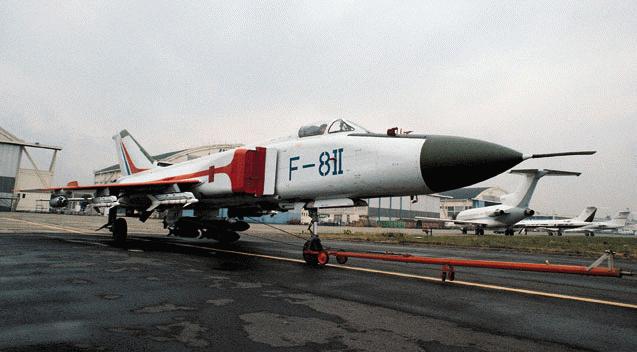
1. Shenyang J-8 / F-8 II "finback"
Development
started way back in 1964 of the J-8 which was a larger sort of MiG-21 /
J-7 with a large nose intake and two engines! However there
were many development problems and it did not meet requirements. Only
about 100 first generation J-8 "Finback A" were manufactured until 1987.
In
1980 there was a big redesign with two intakes and large radar nose,
this being the J-8 II. It got area ruling on the fuselage and was in
fact a new design. A large new Type 208 radar was fitted in the nose.
One 23
mm Type 23-3 twin-barrel cannon in an underfuselage pack was fitted
immediately aft
of nosewheel doors. Also pylons are fitted below the delta wing,
capable
of carrying various stores and fuel tanks. First flight was June 1984 and NATO calls it "Finback-B" with the J-8B being an all weather interceptor. Max speed is
claimed to be about MACH 2.2 but this seems a bit a too high...
The J-8D was an interceptor which be refuelled in the air and fire PL-8 air-to-air missiles and in a ground attack role low drag bombs. The latest version was the J-8F with bWp-13B engines, a new Type 1492 radar and it could fire the PL-12 (SD-10) active homing air-to-air missile. First flight of the J-8F was in 2000. The JZ-8F is a reconnaissance version. The J-8H/ J-8G is a modernized version of 2002 with unknown radar capable of firing PL-11 AAM missiles, laser bombs and YJ-91 anti-radar missiles.
It appears that in 1995 some 100 "Finbacks" were operational and in 2010 still some 300 modern J-8 are active in the PLAAF. It is also operated by the Chinese naval aviation (PLAN).

References: website of Janes
A couple of drawings were discovered:
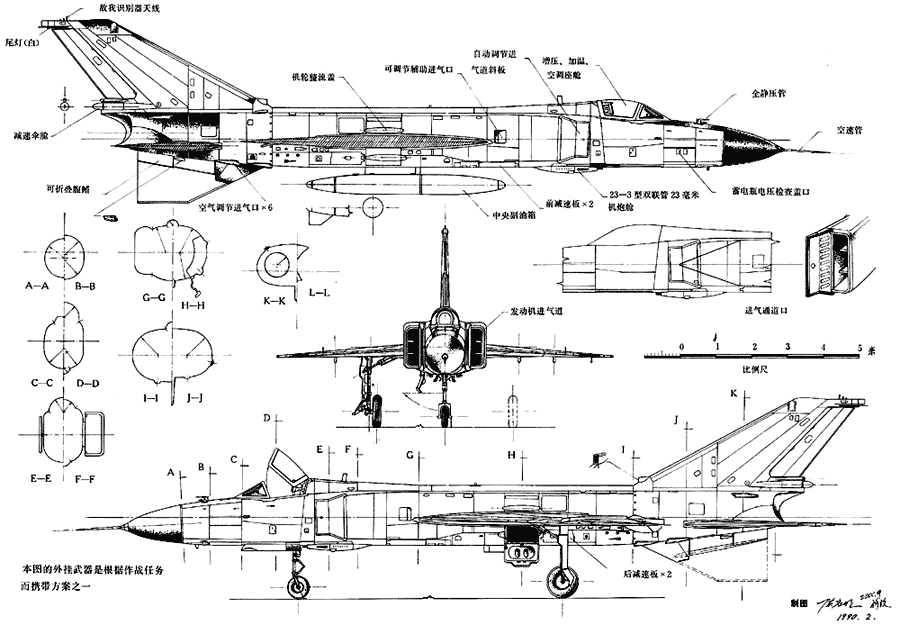
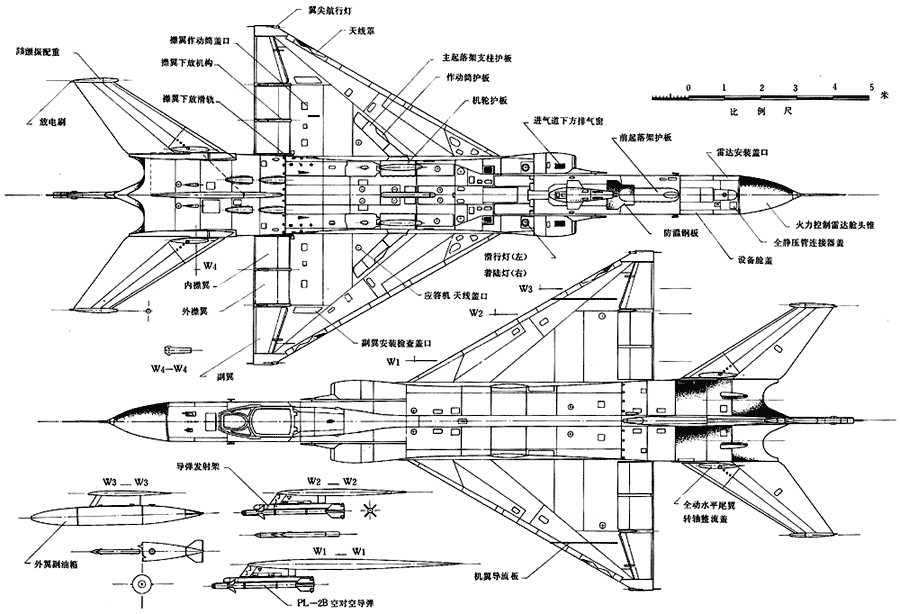
Dimensions
of the real plane are a length of 21.59 m and wing Span of
9.34 m.
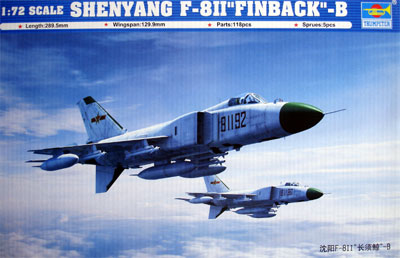 ...
...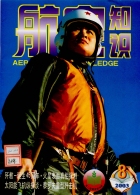
The Trumpeter
1/72
kit #01610 has about 120 parts which are crisp and with fine recessed
panel lines. It represents the F-8 II type. Decals are provided for Chinese
planes with options for several Red nose numbers. Instructions are clear but with some
"vague" colours, the overall plane being white but with a nice colour scheme
print.
At 1/72 Scale the length is 295mm
and wingspan 130mm, and the Trumpeter kit matches with these figures. 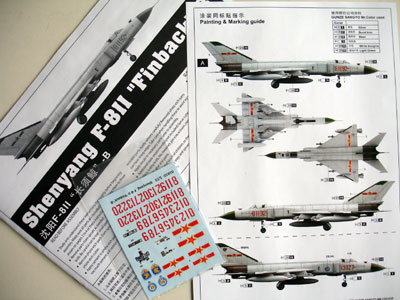
Accuracy seems OK, which indicates
Trumpeter had access to a real plane. Detailling is as can be expected
for a kit at this scale but is not exceptional but with good undercarriage,
panels and exhaust pipes which are of enough depth. You may add some extra
details in the cockpit area. Stores are fuel tanks and chinese type PL-8
? missiles, indicating this to be a model of the J-8D. The plane is rather "clean".
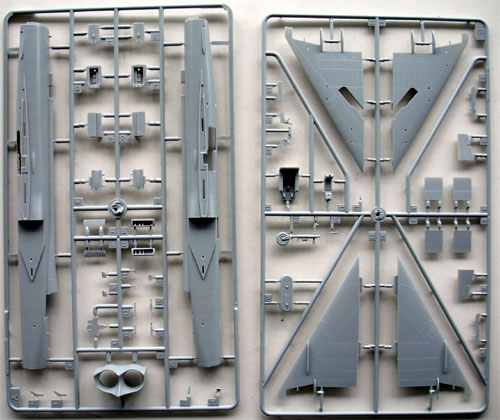
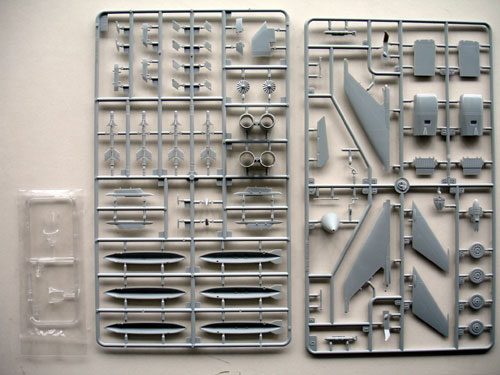
The kit was made straight out of the box. Only limited amounts of putty filler were needed, but nothing uncommon for the average modeller.
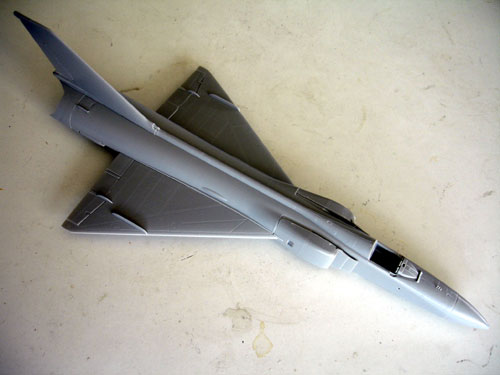
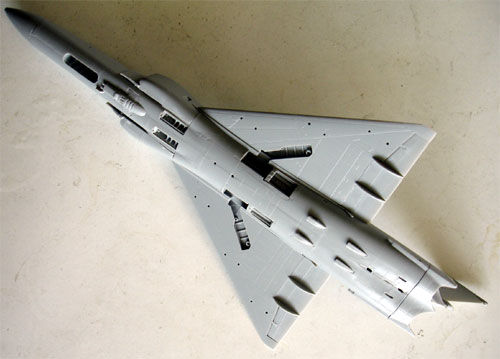
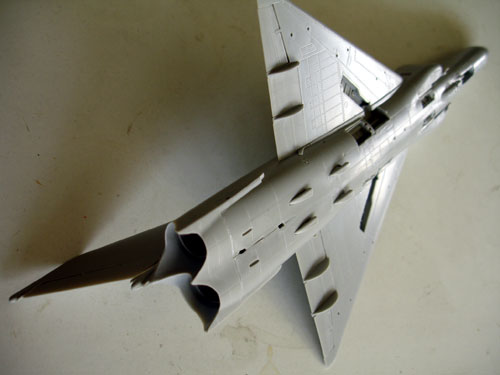
Colours
It seems early Chinese operated F-8 II Finback-B are overall white.

Overall, this is a model of a unusual
subject.
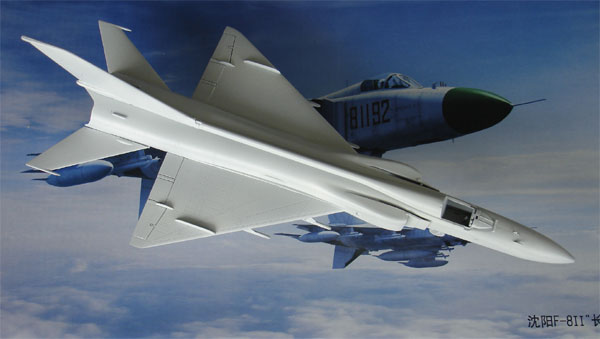
The overall model was assembled, sprayed
light grey to check voor any surface imperfections. After some minor correction
with putty, it was given a mat white and than gloss white coat with the
Badger 150 airbrush. The exhaust area was given a coat of metallic. The
nose, fin leading edge and gear wheel hubs were painted green. The nose
wheel leg has some blue areas.
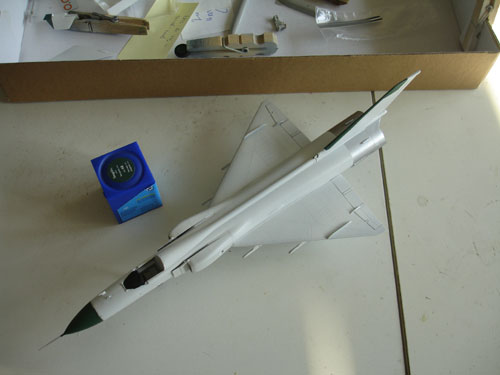
Decals are very nice, although I feel a bit oversize, especially the special markings. Application of the decals went OK. Cockpit hood was set open and the model was ready.

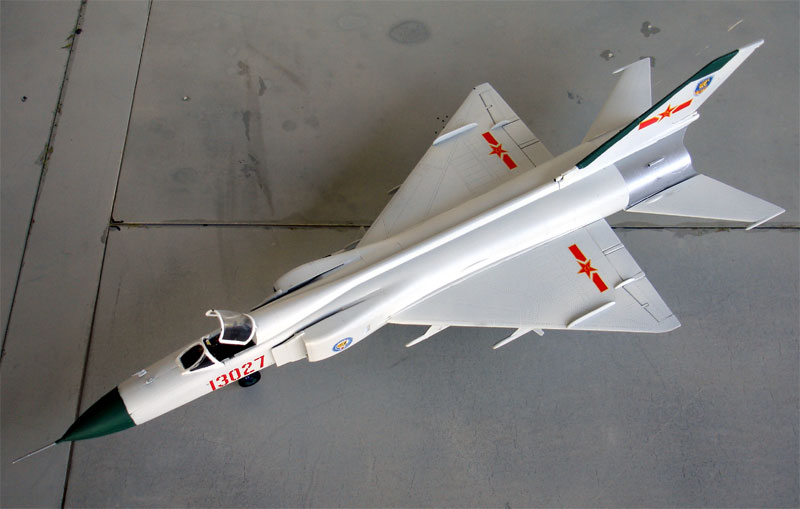
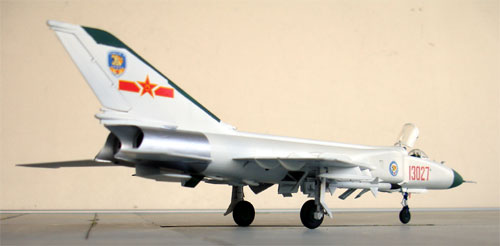 .
.
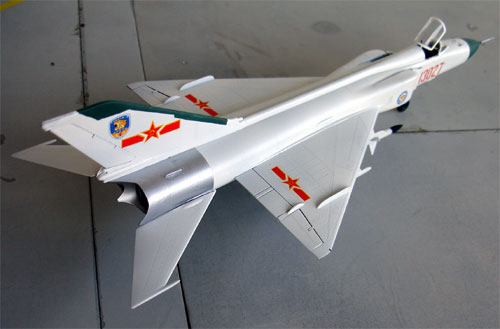
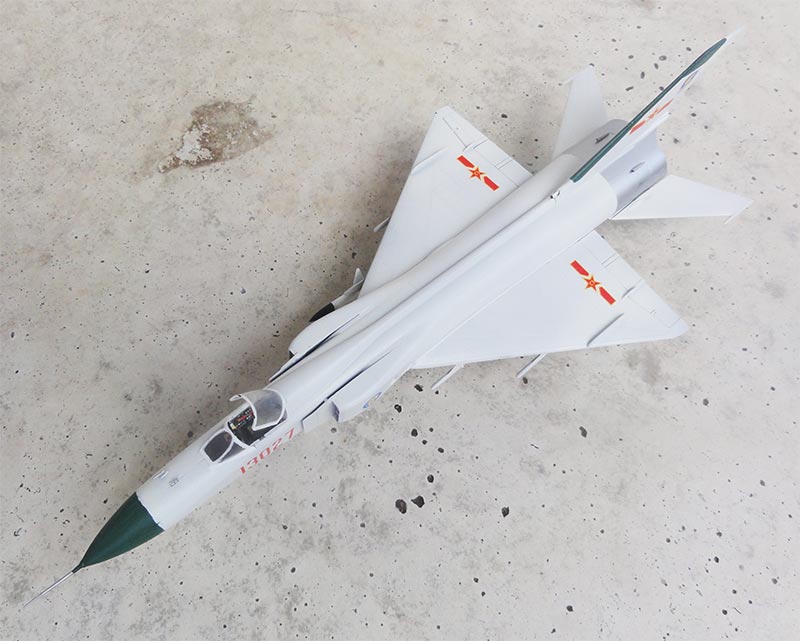
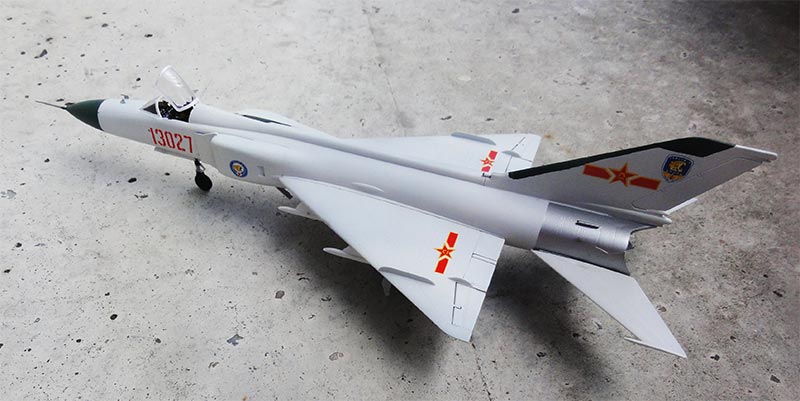
A nice straight out the box model in the 1/72 collection
![]()
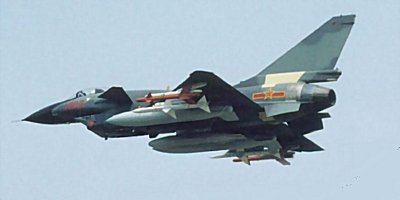

2. Chengdu J-10 "New generation fighter"
The Chinese Chengdu J-10 (FC-20) is a modern multi-role fighter which as similar design features as the latest Western types like the Typhoon. It has canard, delta like wing and central rectangular intake. Development started back in 1980 at the Chengdu aircraft industry corporation and there seem to have been assistance from Israel incorporating "Lavi" experience in the design. The assistance did not last long and the project suffered numerous problems resulting in several "redesigns". The project also was to use Western avionics but due to the Tianammen 1989 incident this was blocked. Russian systems were later on incorporated including the AL-31F jet engine delivered from Russia (and not licensed).
First prototype flew in 1996 with a first production aircraft delivered in 2002 and it was still secret aircraft. 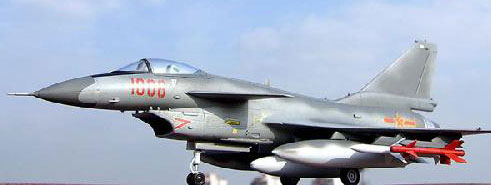
The J-10A single seat fighter is
thought to have a very good maneuverability and also speeds around Mach
2 at altitude and a max weight of around 18,500 kg. It has 11 external
pylons to carry stores. The type entered
service at the end of 2005 with the PLAAF.
The J-10S is a dual trainer and the J-10B is an improved version with a simpler intake ramp and better radar cross signature. It also has an optical targeting system, visible in a bulge forward of the windscreen.
It appears that in 2010 some 120 J-10 aircraft were delivered.
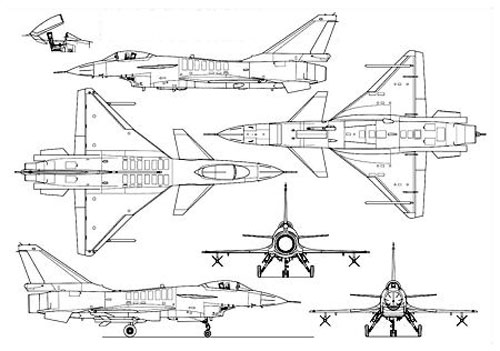
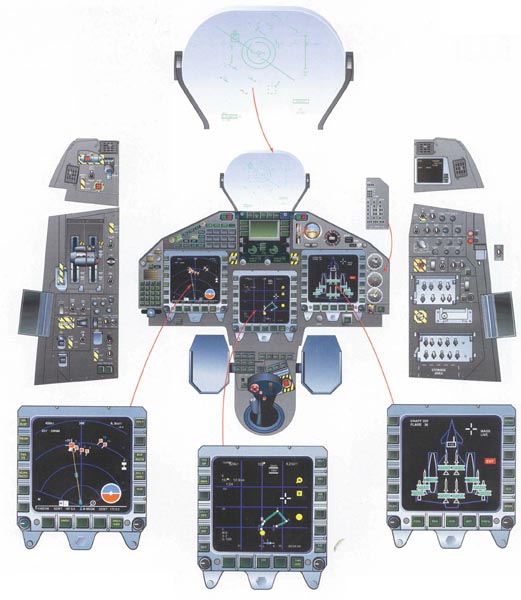 J-10
instrument panels
J-10
instrument panels
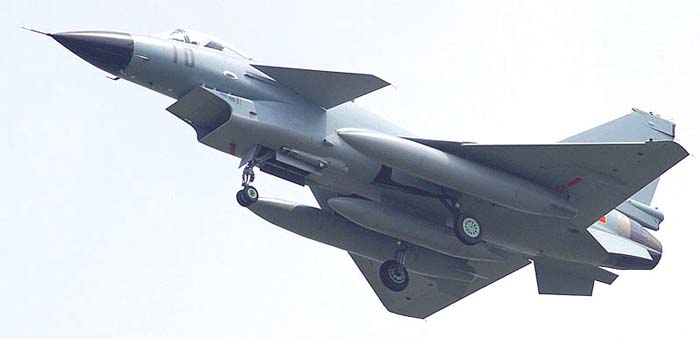
real airplane
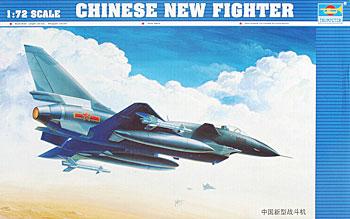
In 1/72 scale
the Chengdu J-10A is available from Trumpeter #01611
and has about
100 parts and markings for two planes with different serials and colour
schemes, which are believed to be prototypes. The dimensions and scale
accuracy could not be verified before making this model.
Parts have fine recessed panels and look OK. Cockpit interior is simple so cries for some extra details. You also get some parts for the PL-8 AAM and PL-10 AAM missiles and fuel tanks.
The model itself looks quite good and assembly was straight forward. However I added a tunnel / intake so removed the vertical walls in the intakes (in parts A1 / B22). In the middle of the intake, a triangular piece of card was added to suggest 2 intake tunnels.
During assembly,
some filler was needed and take care to get the wing-fuselage joint well
aligned.

Colours indications are vague, I made the plane with several grey shades. Used were enamel paints:
- Humbrol 147 for H57.73 (about FS 36495)- Humbrol 127 for H308 (about FS 36375).
The missiles seem to be white and the radar nose black. The lower
scheme shown by Trumpeter on instructions' page 8 seems OK. The undercarriage
legs were painted white. A Badger model 150 airbrush was used to apply
the paint.


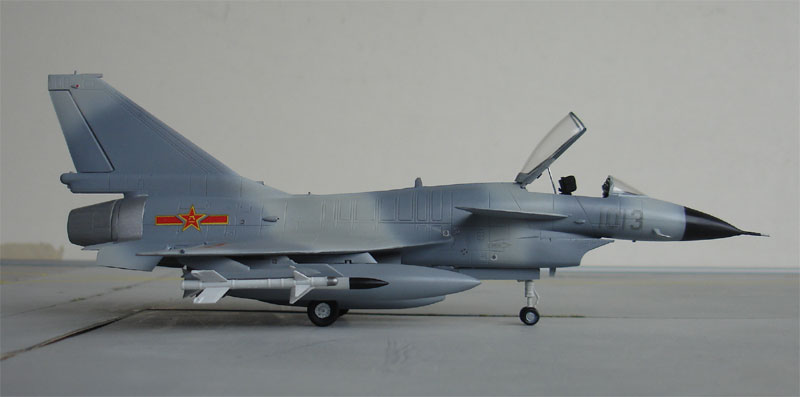
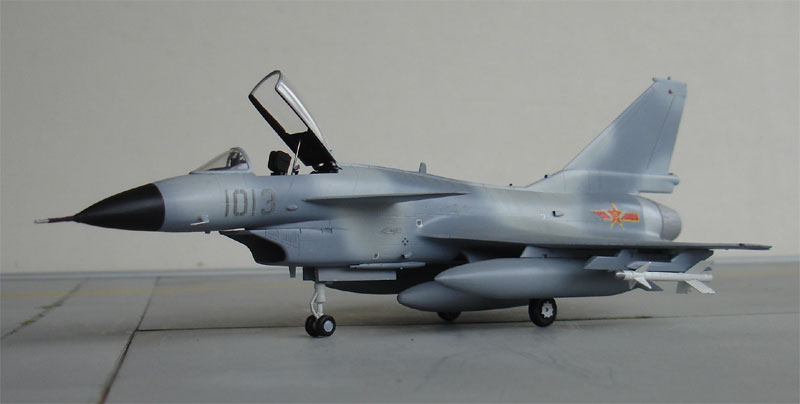
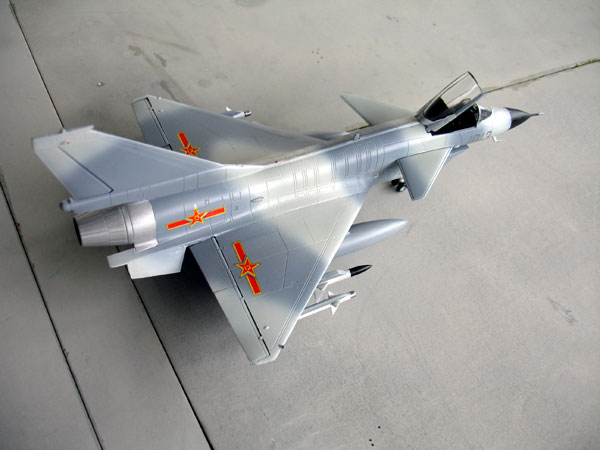
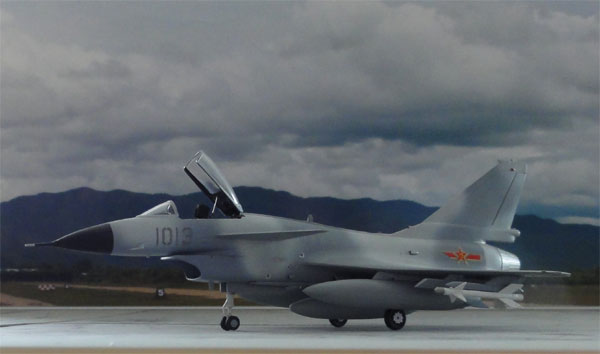
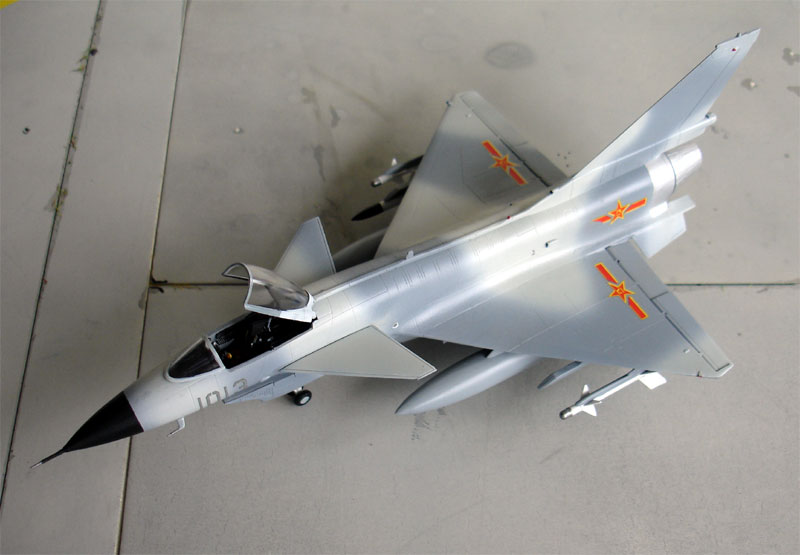
Chengdu J-10A "1013" of the CAC/ 3rd test flight regiment .
Overall, a
nice modern Chinese airplane in the 1/72 model collection.
books:
- China Today: Aviation industry, China aviation industry press, 1989 (English version);
- Chinese Air Power, Yefim Gordon and Dmitriy Komissarov, Midland publ., 2010;
- The Chinese Air Force, Evolving concepts, roles and capabilities, Editors Hallion, Cliff and Saunders, Institute for national strategic studies, Washington, 2012;
web:
- http://home.iae.nl/users/wbergmns/info/j10.htm
- Chinese site Fighters
- http://www.fighter-planes.com/info/j10.htm
- WIKIPEDIA https://en.wikipedia.org/wiki/Xian_JH-7
(c) Copyright "designer"/ All rights reserved. Your comments are welcomed by webmaster
Last update December 2021

